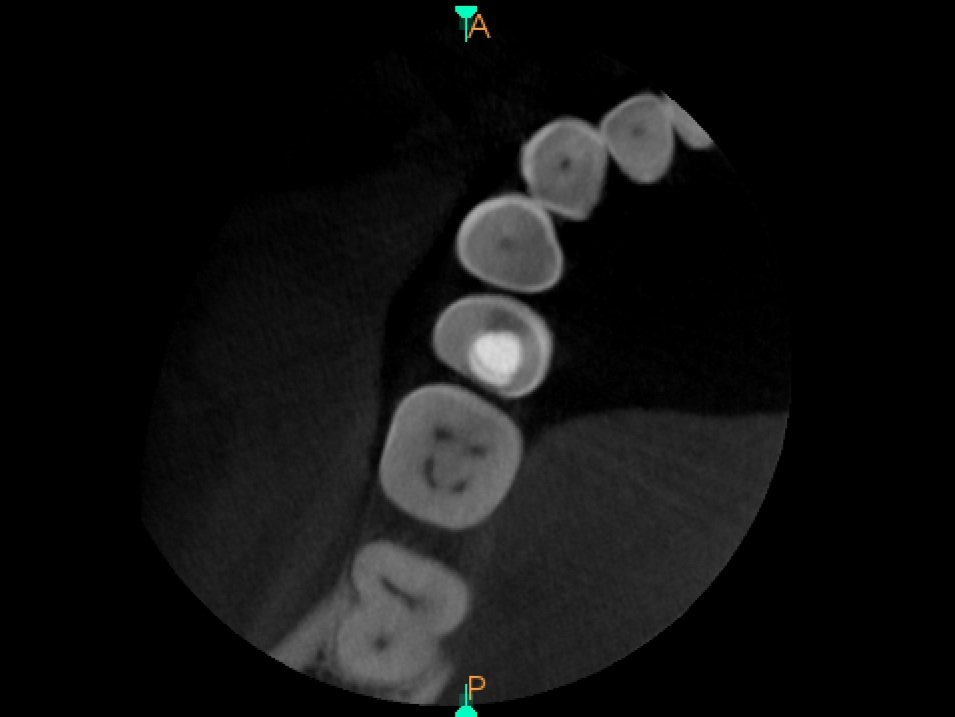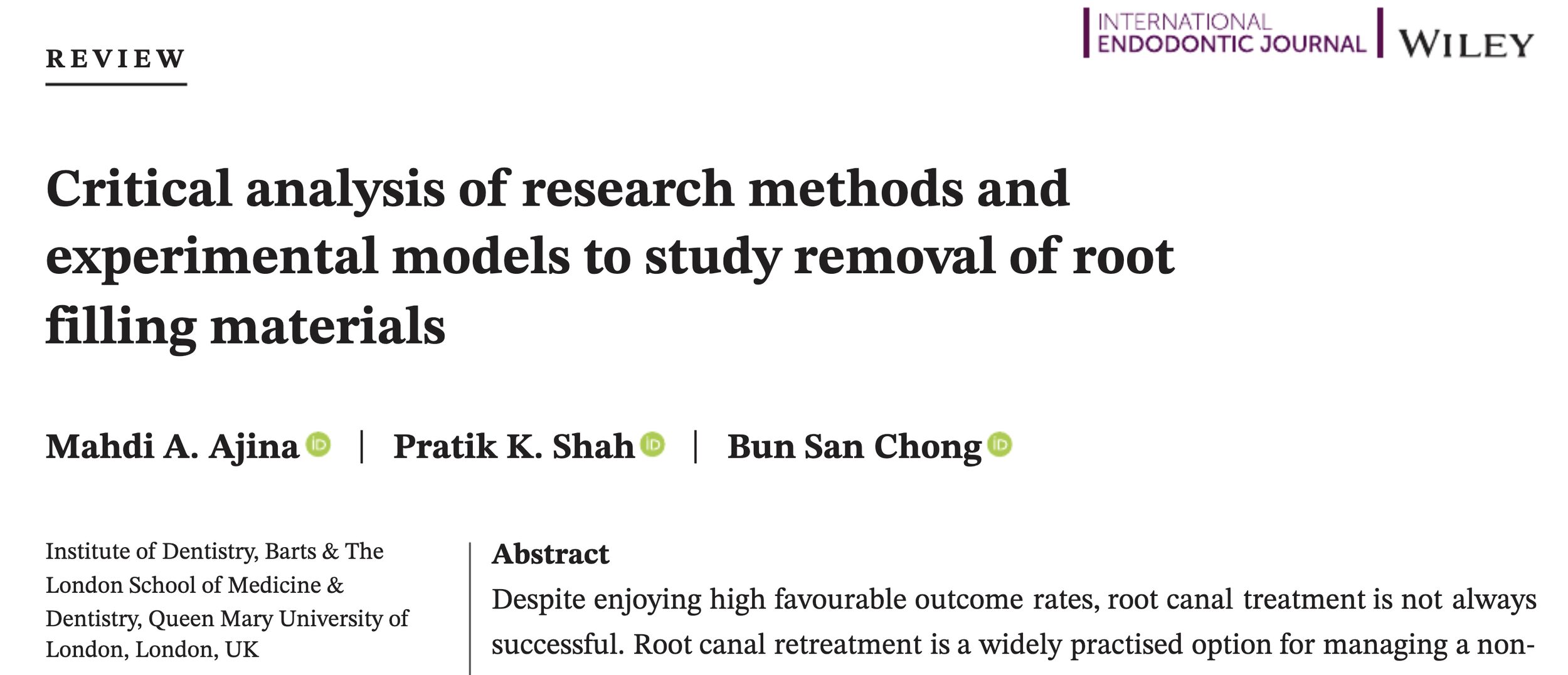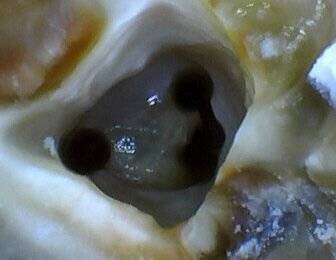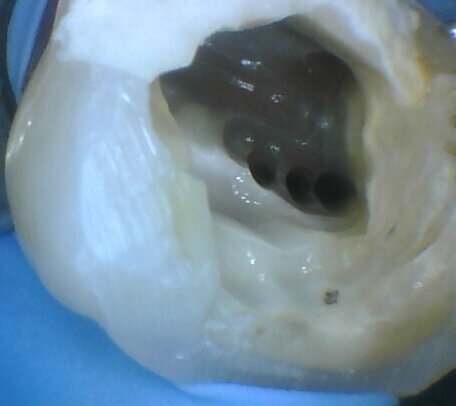
An extra dimension
Cone beam computed tomography is a powerful tool Endodontists can use to aid their treatment planning and execution. The three dimension view of the tooth reveals any missed anatomy, position of fractured instruments and perforations and is extremely useful when planning surgical treatment. In this case the preoperative periapical radiograph suggests there was a missed canal and a CBCT scan proved to be helpful in the overall treatment.


I found you!
Sclerosed canals can be challenging to locate and prepare. Irritants, including bacterial attack from an area of decay, can cause the dental pulp (nerve) to create and deposit more dentine, closing up the root canal space. High magnification and illumination with careful tooth structure removal ensures the canal is uncovered and prevents unnecessary weakening of the tooth.

It’s just a flesh wound!
Deep carious lesions irritate the pulp and cause its inflammation. In some cases this continues to spread leading to necrosis (death) of the dental pulp and infection of the root canal system.

Let me ‘C’!
Mandibular second molars most commonly have three root canals, two in the mesial root and one in the distal root. Sometimes the canals can present in a ‘C’ shape on the pulp floor.

One, good. Two, great. Three, I’m getting excited now!
The root canal morphology of the maxillary first molar can be complex. The teeth tend to have three roots with four canals, the mesio-buccal root containing two canals. Even though the prevalence of the second mesio-buccal canal is quite high, 48-97.6% (Martins et al. 2018) finding its elusive orifice is one of the challenges of root canal treatment.

Separated Instrument Removal
Overusing and excessive force are the main reasons behind instrument separation. The tip of the file can become locked in a narrow canal and fracture as the motor tries its best to continuously rotate it. This unfortunate incident prevents the full mechanical and chemical disinfection of the root canal system and therefore reduce the chance of a successful outcome.

